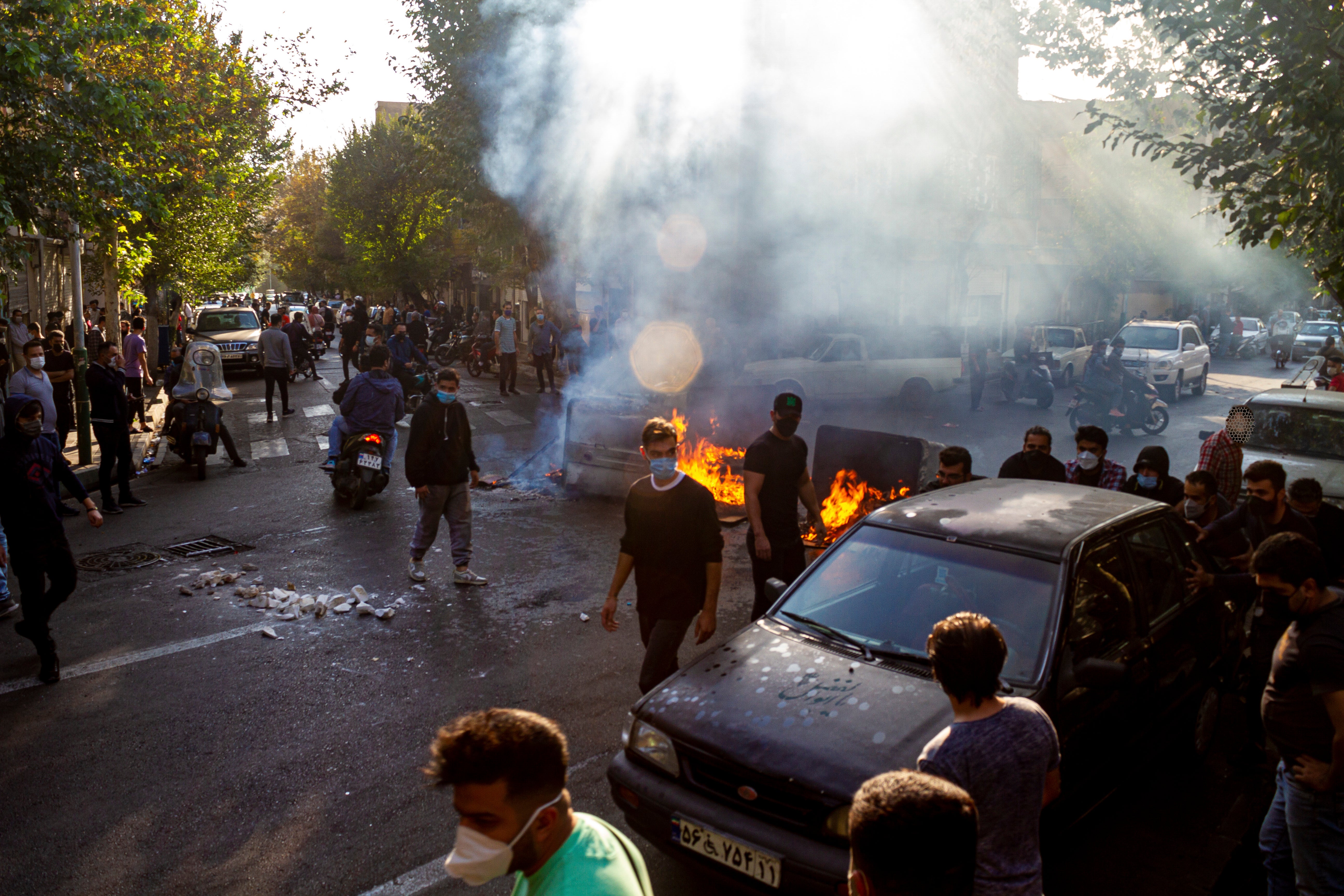Iran's currency hits new low against the dollar amid unrest
Iran’s currency has dropped to its lowest value against the dollar, as nationwide unrest and a stalemate in negotiations to revive Tehran’s nuclear deal with world powers have been weighing heavily on the rial

Your support helps us to tell the story
From reproductive rights to climate change to Big Tech, The Independent is on the ground when the story is developing. Whether it's investigating the financials of Elon Musk's pro-Trump PAC or producing our latest documentary, 'The A Word', which shines a light on the American women fighting for reproductive rights, we know how important it is to parse out the facts from the messaging.
At such a critical moment in US history, we need reporters on the ground. Your donation allows us to keep sending journalists to speak to both sides of the story.
The Independent is trusted by Americans across the entire political spectrum. And unlike many other quality news outlets, we choose not to lock Americans out of our reporting and analysis with paywalls. We believe quality journalism should be available to everyone, paid for by those who can afford it.
Your support makes all the difference.Iran’s currency dropped to its lowest value against the dollar on Tuesday, after weeks of nationwide unrest roiling the country. A stalemate in negotiations to revive Tehran's nuclear deal with world powers has also weighed heavily on the rial.
Traders in Tehran exchanged the rial at 338,000 to the dollar, up from 332,200 on Monday. Iran’s currency was trading at 32,000 rials to the dollar at the time of the 2015 nuclear accord that lifted international sanctions in exchange for tight curbs on Tehran's nuclear program.
The rial’s new low comes amid protests first sparked by the Sept. 16 death of 22-year-old Mahsa Amini in the custody of the country's morality police. She was detained for allegedly violating the Islamic Republic's strict dress code for women.
The demonstrations have swept the country, morphing into one of the boldest challenges to Iran's ruling clerics since the 1979 Islamic Revolution. Security forces have sought to quash dissent, killing at least 270 people and arresting some 14,000, according to rights groups.
Protesters have targeted Iran's state-mandated headscarf, or hijab, for women. But the sickly state of Iran's economy is also a main force driving Iranians into the streets. Soaring prices, high unemployment and corruption have fueled the unrest.
The Iran nuclear deal has been teetering toward collapse since talks stalled months ago. After protests erupted, the United States and European Union imposed additional sanctions on Iran for its brutal treatment of demonstrators and its decision to send hundreds of drones to Russia for use in its war in Ukraine.
The White House has faced growing pressure to scuttle the deal altogether. The U.S. special envoy to Iran, Robert Malley, said on Monday that the administration “makes no apology” for its refusal to declare the deal dead.
Iran's economy has deteriorated significantly since former President Donald Trump withdrew the U.S. from the nuclear deal in 2018 and restored suffocating sanctions on Iran's crucial oil and banking sectors.